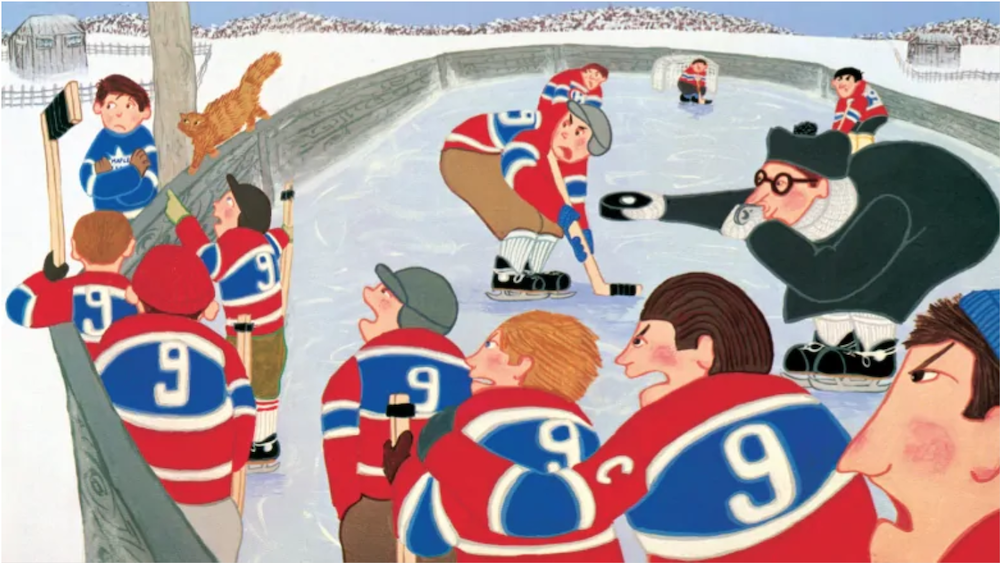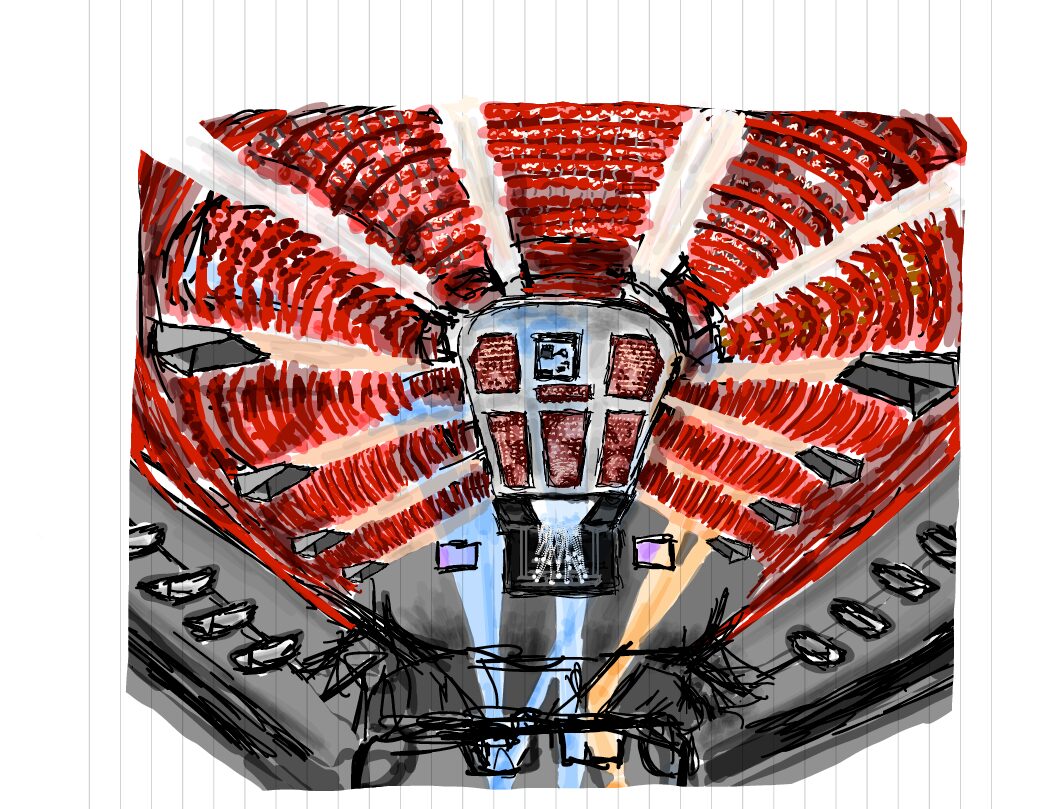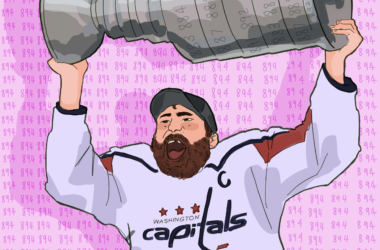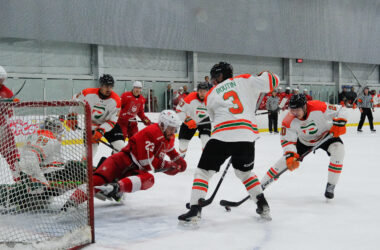Montreal has been at the epicentre of hockey since the creation of the sport. While it is disputed exactly where the game was invented, the first organized match included a number of McGill students and took place in 1875 at the Victoria Skating Rink, mere blocks from the Roddick Gates. In the following decades, several small North American leagues came and went. Most drew small crowds and folded after a few years, but all had some Montreal ties. In December 1909, a group of businessmen formed a new team in Montreal as part of the brand-new National Hockey Association (NHA). In doing so, they created an icon: The Montreal Canadiens.
When the NHA folded in 1918 and the National Hockey League (NHL) came into existence, the Canadiens became the only team to predate the creation of the new league. Since then, the NHL has grown to what will soon be 32 teams, making it the second-largest professional sports league in North America by number of teams, and fourth-largest by popularity. As the NHL grows, the Canadiens, too, show no signs of slowing down: Hockey pundits recognize their fanbase as one of the most passionate in the entire NHL.
The Canadiens have built their brand on a long history of high-quality, entertaining hockey. Montreal has won 24 Stanley Cups, the most of any team, and their closest competition, the Toronto Maple Leafs, trail far behind with 13. Two-thirds of these victories occurred during the 1950s, 60s, and 70s, which are considered the golden age of Montreal hockey. Maurice Richard, Guy Lafleur, and Jean Béliveau led talented Canadiens rosters. These teams could handle almost any opponent without breaking a sweat or losing their signature grace, shattering many league records in the process.
Christopher Lyons, head librarian for McGill’s Department of Rare Books and Special Collections, was born in Montreal and grew up cheering for the Canadiens during the 1970s. He believes that the city’s love for the Canadiens stems from the success established in past dynasties.
“The Canadiens in the seventies were beautiful players,” Lyons said. “Their playmaking, their skating, and their passing was just stunning. As a kid growing up, we were spoiled. We just assumed that Montreal would win the [Stanley] Cup every year.”
The Canadiens could build such dominant teams in the past because of a league rule that gave them a specific advantage: They had exclusive rights to sign homegrown talent. For many years, Montreal could select players from thousands of amateur leagues in Quebec without having to compete with the other NHL teams. Many of the superstars who made up the Canadiens’ Cup-winning squads, such as Lafleur, Béliveau, and Richard, were recruited through this program. The competitive advantage gave rise to another narrative that defined the love for the Canadiens: They were Quebec’s team.
“If you grew up in Montreal, you had these deep, deep feelings for this team and for its history,” Lyons said. “There was a real sense of pride and believing in something.”
The 1950s-70s were a period of tension for the province. Quebec was strongly divided by language. Because of the conservative policies of Premier Maurice Duplessis, Quebec fell behind the rest of Canada in its technological and economic development, and, according to Suzanne Morton, professor in the Department of History and Classical Studies, anglophones sometimes treated francophones as second-class citizens.
“Generally, anglophones made a lot more money than francophones,” Morton said in an interview with The McGill Tribune. “Economic differences were tapped into by francophone nationalists.”
Quebec francophones may have been treated as inferior, but the Canadiens of the 1950s, led by league-leading scorer Richard, was a constant that French Canada felt they had over the anglophones. Francophones throughout the province saw homegrown stars like Richard as heroes who came from small towns or working-class neighbourhoods in Montreal, starting out the same way as hundreds of local children. They walked the same streets and skated on the same backyard rinks. The Canadiens provided many Montreal hockey fans with positive feelings that a francophone hockey player could reach the heights of the NHL when it had previously seemed impossible.
Roch Carrier of Ste. Justine, QC, was one such boy. His famous children’s book, The Hockey Sweater, tells a true story from Carrier’s childhood: A young Carrier and his friends idolize their hero Maurice Richard. They play hockey on a frozen pond, all wearing Canadiens jerseys with his number nine on their backs. One day, Carrier’s francophone mother writes a letter to the jersey manufacturer in Toronto to order her son a new Richard sweater, but, as a result of a failure of translation, the company sends a Maple Leafs jersey instead. Humiliated, Carrier wears the new jersey out only to be laughed away by the other children who see Toronto as vastly inferior to the great Canadiens. Once he receives the proper jersey, Carrier goes to play hockey with his friends once again.
While Carrier’s tale is one of love for the Canadiens rather than anger with English North America, anger once prevailed back in March 1955. Following an incident in which he accidentally hit a linesman in the face with his stick, Maurice Richard was suspended for the remainder of the 1954-55 season, including the playoffs. At the time, the Canadiens led the league and were favourites to win another Stanley Cup. Without Richard, however, they finished second, falling to Detroit in a seven-game Cup Final. Many francophone fans believed that the suspension would have been more lenient for an anglophone player, and, as a result, when League President Clarence Campbell visited for a match several days after the incident, a massive riot broke out. Hockey writer Sean McIndoe describes the 1955 Richard Riots in The Down Goes Brown History of the NHL.
“The situation was a powder keg, with protests breaking out outside the building and death threats called in to the president’s office,” McIndoe explains in his book. “When [anglophone] teammate Bernie Geoffrion passed Richard to secure the scoring title on the season’s final day, Montreal fans booed him.”
McIndoe believes that Canadiens fans felt that this drastic suspension was a slight toward the francophone Richard.
“There was a feeling among a segment of the Canadiens fanbase that they were not just unhappy because their best player had been suspended for the season,” McIndoe said in an interview with the Tribune. “There was a feeling that this would not have happened to an English player.”
The Richard Riots capture the focal point of why Quebec loves its team so much. In a country dominated by the English language, the Canadiens are a cultural icon for francophones. According to Lyons, the Québec Nordiques, the province’s other team until 1995, attempted to tap into franco-nationalist sentiment at an organizational level during their run throughout the 1970s and ‘80s.
“The Nordiques played themselves as the pure Québécois, quasi-nationalist team,” Lyons said. “As an anglophone Montrealer, their association with the politics of the time is what made the Nordiques more dislikeable.”
However, the team ultimately moved to Colorado, an area of the United States that was unconcerned with the plight of Québécois nationalists. Except for a group of fans that continues to push for the Nordiques to return to Quebec, the Nordique fanbase died then and there, and many returned to following the Canadiens.
The Montreal Canadiens inspired franco-national pride from the 1950s through the ‘70s, dominating the NHL when anglophone teams could not. While their dominance in the league has dwindled, pride in the local team is passed on through generations, which equips the Canadiens to proudly represent their city.










An interesting article, but in one of your quotations from Sean McIndoe’s book, you have “[anglophone] teammate Bernie Geoffrion.” But wasn’t Geoffrion francophone also? Bilingual, yes, as we know from all those Bud Lite commercials, but my information is that his first language was French.